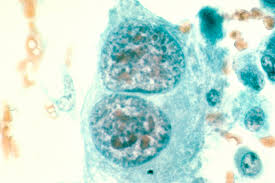An X-Ray Tech’s Quick Reference Guide to Bone Cancers

There are several bone cancer types with varying incidence. They include both primary neoplasms as well as bone metastases. Primary neoplasms (new and abnormal growth of tissue) of the bone, such as osteosarcoma and multiple myeloma, are less common compared to secondary bone metastases (spread of a primary tumor to the bone from another site in the body).
Incidence of Bone Cancer Types
Multiple myeloma is the most common primary malignancy arising in bone. Other bone cancer types are diagnosed in about 2,500 people each year and claim approximately 1,500 lives annually. In comparison, almost 15,000 new cases of multiple myeloma are diagnosed every year and the disease claims more than 10,000 lives annually. Also, the incidence of multiple myeloma is higher in men compared to women and in Blacks compared to Whites.
As noted, the frequency of secondary bone involvement by cancer is much higher than primary neoplasms of bone. More than half a million Americans die of cancer each year. The majority of cancer patients have at least some skeletal complication from secondary spread of the tumor to bone. In fact, primary malignancies of the prostate, breast, kidney, lung, stomach, pancreas, colon/rectum, thyroid, and ovaries are commonly associated with bone metastases.
People with advanced stage prostate and breast cancer frequently have spread of the cancer to the bone, often causing debilitating pain at the end of life. The most common site for bone metastases is the spine. However, secondary deposits of cancer can also occur at other sites. These commonly include the hips, pelvis, upper legs, and skull.
Radiographic Features of Primary Bone Tumors
The X-Ray Tech plays a key role in establishing initial diagnosis and managing various types of primary bone cancer. The radiologist looks for features such as growth rate, biologic activity, lesion margins, thinning, periosteal reaction, and destruction of bone. Long bones are usually imaged in frontal and lateral projections. Oblique views are necessary for joints and ribs. Radiography is particularly challenging in areas with complex bony structure and overlap, such as the spine and acetabulum. CT or MRI may be needed to determine the presence and type of bone cancer in these areas. If a bone tumor is identified, image features are used to characterize the malignancy.

Margins of Primary Bone Tumors
Features that are indicative of an aggressive bone cancer type include the margin, which reflects the growth rate of the tumor. This can range from geographic margins with a round/ovoid tumor and narrow transition zone from tumor to normal tissue (non-aggressive) to ill-defined tumors with a wide transition zone (aggressive bone tumors).
The next more aggressive type consists of a non-geographic margin with an ill-defined area of bone destruction. These bone cancer types display features such as fine or fuzzy osteolysis and moth-eaten appearance. Permeative margins are the most aggressive type. Different types of margins may intermingle in the same tumor. Radiography allows quick, inexpensive, and easily accessible analysis of tumor margins.
Cortical Expansion in Primary Bone Tumors
Benign bone cancer types are typically slow growing. This allows the cortex to expand rather than be destroyed. The presence of a partially or completely intact cortex is indicative of this bone cancer type. With a few exceptions, the degree of cortical expansion can be correlated to the tumor’s growth rate. Some lesions show mild cortical expansion with well-defined less aggressive margins. Other bone cancer types, even benign tumors, may show a marked amount of cortical expansion with local destruction.
Periosteal Reaction
This is a less specific feature that is indicative of the tumor’s biologic potential. Highly aggressive bone cancer types often exhibit multilaminar periosteal reactions and a characteristic Codman’s triangle due to the mass effect. Less aggressive tumors tend to display unilaminar periosteal reactions.
Matrix Mineralization
Chondroid, osteoid, and fibrous bone cancer types often exhibit a characteristic matrix mineralization. The presence of this feature is not very useful in distinguishing between benign and malignant lesions since it is present in both bone cancer types. However, it can help identify the histology of the tumor. Osteoid matrix may appear fluffy like clouds or dense like ivory. Chondroid matrix may have a stippled or lobular appearance. Fibrous matrix has a ground-glass appearance and increased radiographic density.
X-ray Continuing Education
We offer a range of courses for radiologic technologists to complete their continuing education requirements. In addition to our general radiography e-courses, we have specific courses for mammographers, DXA operators, and fluoroscopists.